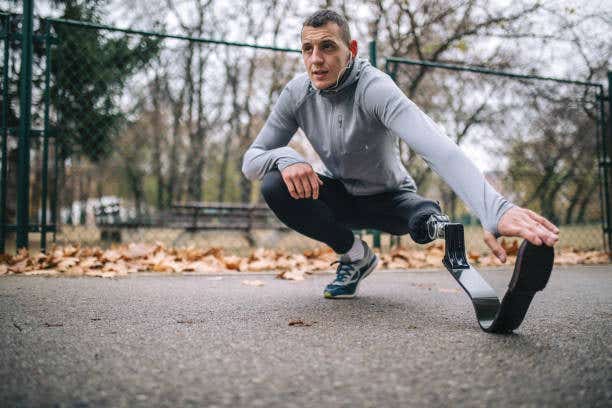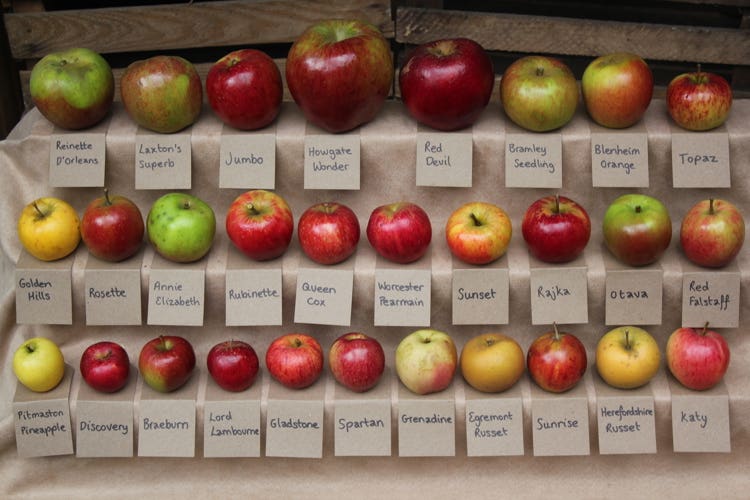Groundbreaking discovery makes human body part regrowth possible
New research shows that physical forces—like pressure and movement—play a key role in successful bone regeneration.

Bone regeneration is a remarkable process that varies widely across species and presents significant opportunities for advancing human medicine. (CREDIT: CC BY-SA 4.0)
Bone can heal itself, but not always in the ways we expect. Some animals regrow entire limbs. Others, like humans, can only manage a few millimeters at the tip of a finger. This wide range in regenerative ability offers researchers a window into new medical possibilities.
For years, scientists have turned to animals like salamanders and zebrafish. These creatures regenerate limbs and fins with ease, and researchers hope their secrets could one day apply to people. But bones don’t just grow back by magic—there’s a complex web of biology and mechanics behind the scenes.
Recent findings challenge long-held beliefs about bone healing. It’s not just about biology. New research shows that physical forces—like pressure and movement—play a key role in successful bone regeneration. This adds a whole new layer to what we thought we knew.
In mammals, broken bones usually heal through fracture repair. A group of cells near the bone, called periosteal cells, forms a soft tissue called a callus to bridge the gap. This system works for small cracks. But when the break is too wide, the process often fails, leaving the bone permanently separated.
Surgeons have found ways to push the body to heal. One method, called distraction osteogenesis, applies steady force to a healing bone. The mechanical load not only repairs the damage but can also lengthen the bone over time. Still, there’s another type of bone healing that’s less known but just as promising.
In both mice and humans, fingertips can regrow if the cut is in the right spot. This isn’t just a patch job—it’s full regeneration. The bone doesn’t bridge the gap like in a fracture. It grows back from scratch, rebuilding itself to the shape and size it once had.
This process starts when the tip is amputated. The injury slices through many layers—skin, nail, bone, nerves, and vessels. The body responds right away with inflammation. Immune cells, especially monocytes, arrive and begin transforming into bone-resorbing cells called osteoclasts.
These osteoclasts go to work dissolving damaged bone. But they don’t stop at the initial injury. They remove an additional 40% to 50% of the bone beyond the original 10% to 20% lost in the cut. That aggressive resorption clears the way for fresh growth.
Related Stories
As the resorption phase concludes, a blastema—a mass of proliferating, heterogeneous cells—forms at the site. This hallmark of epimorphic regeneration contrasts with tissue-specific repair or fibrotic healing.
Progenitor cells differentiate into osteoblasts through intramembranous ossification, sequentially rebuilding the bone from the proximal to distal ends. This highly reproducible process provides a model for studying bone regeneration mechanisms in mammals.
Emerging research has revealed parallels between digit tip regeneration and skeletal development during growth. For example, reduced mechanical load during development leads to diminished bone mass, underscoring the importance of physical forces in shaping the skeleton.
Mechanical load is equally vital in fracture repair and distraction osteogenesis. In salamanders and zebrafish, two common models for studying limb and fin regeneration, the absence of mechanical load significantly impairs regeneration.
However, the role of mechanical loading in mammalian digit tip regeneration remained unclear until recent studies by Dr. Ken Muneoka and his team challenged long-held assumptions.
Dr. Muneoka, a professor at Texas A&M University, has been at the forefront of regeneration research. In a groundbreaking 2019 study, his team demonstrated joint regeneration in mammals, breaking new ground in the field.
More recently, his research has upended a two-century-old belief that nerves are essential for regeneration. Instead, his findings highlight the crucial role of mechanical load. These discoveries mark a paradigm shift in how scientists view the requirements for mammalian regeneration and its potential applications in human medicine.
One of the studies, published in the Journal of Bone and Mineral Research, used a hindlimb unloading (HU) model to explore the effects of mechanical loading on digit tip regeneration. In this model, hindlimbs are suspended to eliminate weight-bearing forces, mimicking conditions of zero gravity.
Connor Dolan, the study’s first author, drew inspiration from NASA’s research on the effects of microgravity on bone. The results were striking: regeneration halted entirely in non-weight-bearing limbs, despite the presence of nerves. Once mechanical load was restored, regeneration resumed, albeit with a delay.
“Absolutely nothing happens during the suspension,” Dr. Muneoka explained. “But once the load returns, regeneration begins after a short delay.” These findings establish mechanical load as a critical factor for regeneration, independent of nerve presence.
A subsequent study, published in Developmental Biology, demonstrated that even denervated digits could regenerate under mechanical load. This discovery contradicts long-standing dogma and redefines the role of nerves in mammalian regeneration.
The implications of these studies extend beyond academic debates. For decades, researchers have focused on the role of nerves and growth factors in regeneration. While these factors remain important, mechanical load introduces a new dimension to the puzzle.
Dr. Muneoka’s findings suggest that nerves are not a prerequisite for regeneration but rather one of several components that must be addressed. From his perspective, the goal shifts from relying on nerves to considering them as part of what needs to be regenerated.
Dr. Larry Suva, head of the Department of Veterinary Physiology and Pharmacology at Texas A&M, emphasized the importance of this shift. “Think of a blast injury where a soldier is left with a stump,” he said. “No one was even considering the mechanical influences before this paper.”
The new findings compel scientists to reevaluate their approaches to regeneration, integrating mechanical load into the equation.
Mechanical load impacts cells at a biochemical level, translating physical forces into cellular signals that drive regeneration. While some researchers have studied the biochemical basis of mechanical load, much remains to be understood.
Dr. Muneoka’s work suggests that mimicking these signals could one day replace the need for physical force, opening new possibilities for regenerative medicine. By developing molecular cocktails that replicate the effects of mechanical load, scientists could advance closer to achieving human limb regeneration.
While regenerating entire human limbs remains a distant goal, these discoveries mark a significant milestone on the path toward that future. Dr. Suva described the findings as a “major marker” in the journey toward full human regeneration.
“Regeneration of a human limb may still be science fiction,” he said, “but we now know mechanical load is as essential as growth factors. That changes how future scientists and engineers will tackle this challenge.”
These breakthroughs also highlight the value of challenging established beliefs. For years, regeneration research has been guided by studies on salamanders and other species, whose mechanisms differ significantly from those of mammals.
Dr. Muneoka’s work reminds the scientific community to consider species-specific differences and adopt a broader perspective. By integrating mechanical load into regeneration studies, researchers can address previously overlooked aspects of the process, paving the way for innovative solutions.
The road to human regeneration is long and complex, but with each discovery, the path becomes clearer. Dr. Muneoka’s research underscores the importance of mechanical load and offers new insights into the factors that drive regeneration.
As scientists continue to build on these findings, the dream of regenerating human limbs moves closer to reality. While many challenges remain, the future of regenerative medicine holds immense promise, thanks to the pioneering work of researchers like Dr. Muneoka and his team.
Note: Materials provided above by The Brighter Side of News. Content may be edited for style and length.
Like these kind of feel good stories? Get The Brighter Side of News' newsletter.
Joseph Shavit
Head Science News Writer | Communicating Innovation & Discovery
Based in Los Angeles, Joseph Shavit is an accomplished science journalist, head science news writer and co-founder at The Brighter Side of News, where he translates cutting-edge discoveries into compelling stories for a broad audience. With a strong background spanning science, business, product management, media leadership, and entrepreneurship, Joseph brings a unique perspective to science communication. His expertise allows him to uncover the intersection of technological advancements and market potential, shedding light on how groundbreaking research evolves into transformative products and industries.



